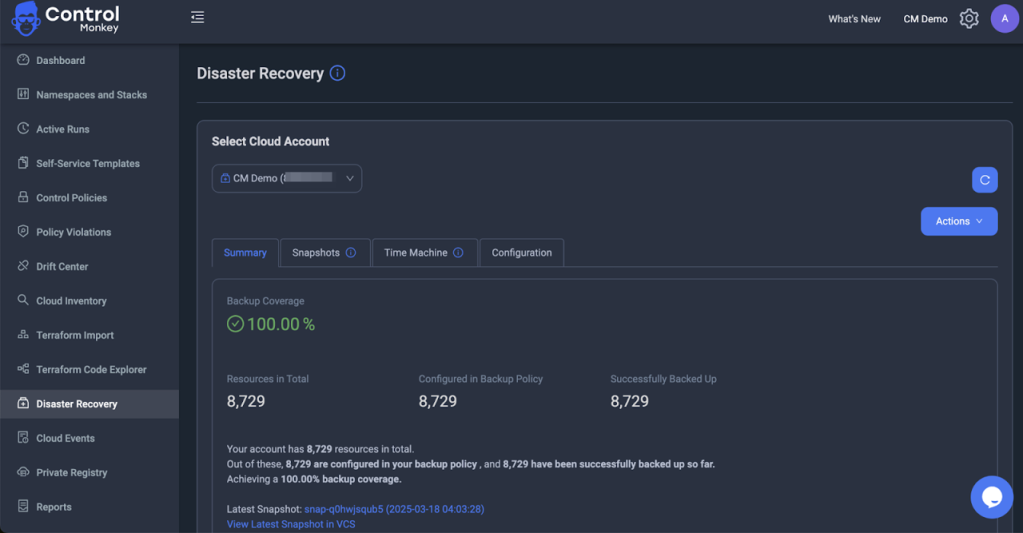
There are a lot of different components that make up a cloud deployment. How many of those components, across multiple cloud environments, is the typical enterprise actually backing up for proper disaster recovery? That’s a question that cloud infrastructure automation startup ControlMonkey is helping enterprises to help answer.
ControlMonkey is in the business of helping to improve cloud automation. Today the company launched its automated disaster recovery technology specifically engineered for cloud infrastructure configurations, addressing a common blind spot in enterprise disaster recovery strategies that typically focus primarily on data or application protection. The new capability provides automated backup and one-click recovery for network configurations, DNS settings, CDN configurations, firewalls, security groups and other infrastructure components that are essential for application delivery but frequently overlooked in traditional disaster recovery planning.
ControlMonkey, whose name deliberately contrasts with Netflix’s infamous “Chaos Monkey” resiliency testing tool, takes the opposite approach to its primate cousins.
“Chaos Monkey brings chaos to your cloud and ControlMonkey brings control,” Aharon Twizer, CEO and co-founder of ControlMonkey, told Network World.
How ControlMonkey uses infrastructure-as-code for disaster recovery
A key best practice for any enterprise deployment today is to use infrastructure-as-code (IaC) tools, such as Terraform to define the environment. Terraform was originally developed by Hashicorp, which was recently acquired by IBM for $6.4 billion.
ControlMonkey isn’t looking to replace Terraform, rather it’s trying to augment it for disaster recovery.
“Most companies don’t have full coverage of everything in their infrastructure within infrastructure as code, so there are a lot of blind spots—you don’t know what you don’t know,” Twizer emphasized.
On top of that he noted that keeping IaC in a state that always represents the existing configuration can be difficult. There are things like drift, people changing stuff directly in the console, and other real world scenarios that impact infrastructure.
To help solve that issue ControlMonkey uses deterministic AI algorithms to generate Terraform code, known as Hashicorp Configuration Language (HCL), for existing cloud environments, helping customers achieve 100% infrastructure as code coverage.
An increasingly common approach to IaC is known as GitOps, where configuration changes are made in the Git version control repository and then put into operation. ControlMonkey is also able to integrate with Git repositories to help provide more control of IaC changes and backup capabilities.
ControlMonkey
One-click restoration is the goal
With the complexity of cloud configurations, especially in distributed multi-cloud environments with complicated network topologies, restoration of service is often a non-trivial exercise for disaster recovery.
Twizer claims that ControlMonkey can do it in one-click. “The way it works is that ControlMonkey basically scans your entire real-world configuration, generates Terraform code out of it and then provides you one-click restoration for configuration,” he explained. “You can research, you can pinpoint what configuration was changed and when, and you can also restore it with one click.”
According to Twizer, this approach reduces recovery time by 90% compared to manual reconstruction efforts, a critical metric for network operations teams measured on minimizing downtime.
Compliance and governance integration
Disaster recovery isn’t just a ‘nice to have’ type of technology, it’s also often part of regulatory compliance.
“Part of SOC 2 and ISO 27001 talk about having disaster recovery and business continuity plans,” Twizer noted. “Infrastructure configuration is overlooked, and most solutions focus on data, but we see infrastructure as code becoming part of the compliance cycle.”
Source:: Network World
